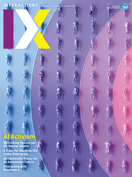Authors:
Alex Taylor, Daniela Rosner, Mikael Wiberg
It's debatable whether AI is in its ascendancy or decline. Over the past decade, artificial intelligence has captivated technoscientific audiences across the globe, especially in the Global North. Coverage has targeted everything from pedestrian versions of AI—the plumbing of technological infrastructures—to full-blown visions of the singularity, the apocalyptic consequence of an artificial general intelligence. The question some now pose is whether AI will continue to grab our imaginations or whether we are, as in the 1980s, erring toward a winter of skepticism.
Whatever the case, it's clear that AI and other data-intensive operations have become a given in people's lives. As technology users, many of us accept that when we sign up for an online service or install an app on a device, we are authorizing companies to access our movements, transactions, and intimacies. The increased prevalence of AI and machine-learning tools for aggregating and analyzing data means that such data, en masse, has achieved a special, contemporary valence. Data and its AI-infused analysis locates authority and power at very specific sites. By the same token, that analysis exploits and extracts value from very particular actors. Unsurprisingly, these acts carry forward familiar disparities and inequalities. They continue to locate wealth and power largely in the Global North, among white liberal elites. Meanwhile, they disproportionately entrench inequities among the already marginalized—including a labor force in the Global South.
It's against such a backdrop that this issue of Interactions brings together works on AI activism. In attracting content, our aim was to draw attention to practices and perspectives that activate different distributions of authority and control. Rather than centering on the goods or bads of AI, we've been keen to give voice to work that rethinks and challenges its inequities and injustices. For example, one of our dialogues, between Jennifer Lee, from Washington's ACLU, and academics Meg Young, P. M. Krafft, and Michael Katell, frames and motivates a U.S.-based activist agenda. Together, the two texts articulate clear goals for working collectively to decenter power.
We also look beyond immediate activist agendas with two further dialogues. In one, scholars Mireille Hildebrandt and Virginia Dignum, perhaps unexpectedly, set activism against existing legal European frameworks, making the important point that even activism requires an understanding of the law, whether it works inside or against it. The other dialogue, from Sarayu Natarajan and Smriti Parsheera, grapples with the burgeoning AI industry in India. This conversation attends in particular to the issues entangled with AI's global distributed labor force and the tensions it surfaces in setting local, culturally distinct value systems against universal ones. Together the three dialogues show that AI has complicated the networks between people and technology, but done so unevenly across global regions, so that any kind of activism will demand much more than singular ideologies or a uniformity in action.
As a theme, AI is a thread throughout the issue. In addition to a number of features addressing the more practical considerations involved in designing for AI and automation, two pieces explore how design can provoke a critical orientation to the architectures and logics that underlie AI. In Making/Breaking, David Benqué's work on the almanac.computer provokes questions about the historically situated aesthetics of algorithmic prediction, and the artist collective RYBN.ORG (in Space) complicate the distributed human and machine labors involved in training a machine to learn. Turning to our regular content, Ovetta Sampson, in Community + Culture, and Elizabeth Churchill, in Ps & Qs, share general guidelines for designing with and against automation, and a language for framing activism more broadly.
Where the issue's contributions diverge from the theme of AI, we continue to see provocative points about the political nature of building technology and the risks to people across diverse communities and populations, worldwide. In overseeing Interactions, as editors, we find ourselves energized by this general turn toward asking deeper questions about the role of design and technology, and the demand for care and responsibility in responding to unceasing challenges. Whether the technical side of AI grows or falters, AI activism will remain a central theme to which we expect to return in the months to come. More imminently, we'll be focusing on the topics of global mobilities (March–April), disabilities (May–June), and labortech (July–August). Whatever the theme, our invitation will persist: We call on all those invested in technology design, and its implications, to be a part of our ongoing conversations so that we better capture the diversity of experience.
Alex Taylor, Daniela Rosner, Mikael Wiberg [email protected]
Copyright held by authors
The Digital Library is published by the Association for Computing Machinery. Copyright © 2021 ACM, Inc.








Post Comment
No Comments Found